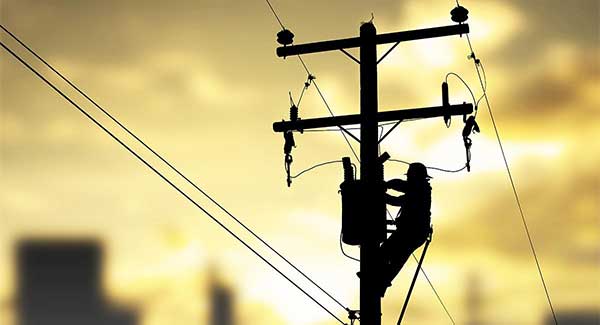The United States national power grid is set to receive a $73 billion investment boost as part of President Joe Biden’s pledge to achieve net-zero greenhouse gas emissions by 2050.The United States national power grid could receive a $73 billion investment boost as part of President Joe Biden’s pledge to achieve net-zero greenhouse gas emissions by 2050.
Under the proposed framework, the government will help finance thousands of miles of new transmission lines to accommodate the expansion of renewable energy generation. A newly-created Grid Authority is also proposed to be created.
Additionally, some $7.5 billion will be alloted to fund a national network of 500,000 electric vehicle (EV) chargers, focusing on highways and routes connecting rural and disadvantaged communities. A similar sum will go towards electric buses for schools and public transport systems across the nation.
The money is all part of Biden’s proposed $1.2 trillion Bipartisan Infrastructure Framework. The White House called the plan “the single largest investment in clean energy transmission in American history.”
Is It an Upgrade or Overdue Investment?
Infrastructure is required to cope with the rise of renewable energy power plants, with the U.S. already seeing record expansion in 2021, with nearly 218 gigawatts (GW) becoming operational – a 10% increase from 2020.
A Department of Energy study has previously found that weather-related outages cost the U.S. economy around $25 to $70 billion annually.
The effects of climate change on the grid, which has around 700,000 circuit miles of lines, can already be seen. In Portland, Oregon, the heat wave at the end of June 2021 caused more than 6,300 customers to lose power, as temperatures reached 112 degrees Fahrenheit (44 Celsius). Oregon lawmakers recently passed a bill requiring state electricity production to be 100% renewable by 2040, one of the most demanding deadlines in the country.
Goals Outlined to Achieve a Balanced National Grid
The North American Renewable Integration Study investigated how the United States, alongside Canada, can achieve a low-carbon grid to meet the 2050 net-zero emissions target. It identified four crucial areas for success.
- Lower prices for solar panel and wind turbine construction make adding extra capacity more affordable, bringing more renewables into the energy mix.
- The U.S. needs 1,200-2,000 GW of renewable energy capacity installed by 2050 to produce 70-80% of its electricity needs.
- A partnership with Canada, sharing transmission and resources, will help balance electricity demand and supply.
- Storing excess renewable energy in batteries to help cope with peaks and troughs in production.
What Price Will Fossil Fuel-Dependent States Pay?
In 2020, U.S. electricity production came from natural gas (40%), nuclear (20%), coal (19%), and renewables accounting for 20%. The big renewable players are wind at 8.4% and hydropower at 7.3%, with solar contributing 2.3%.
As one industry rises, another falls as the U.S. transitions from fossil fuels to renewables.
According to a new report by Resources for the Future, hundreds of U.S. counties may experience “substantial wage and employment changes” because of the shift. In 50 counties, fossil fuel-related industries provide 25 % or more of all wages. There are 16 counties that have 25% or more of their total employment from fossil energy.
Report author Daniel Raimi said: “This transition will be challenging for a variety of technical, political, and socioeconomic reasons. Federal policymakers will need to identify the communities and regions that are likely to be most affected and understand the degree of potential impact.”
The balancing of large-scale national infrastructure investment for renewable energy growth, alongside the managed decline of one of the United States’ most important industries in fossil fuels, could prove as challenging as meeting the net-zero emissions 2050 target.
Opinion writer: Tom Shearman
The opinions, beliefs, and viewpoints expressed by the various authors do not necessarily reflect the opinions, beliefs, or viewpoints of Interactive Energy Group, LLC (IEG) or its parent companies or affiliates and may have been created by a third party contracted by IEG. Any content provided by the bloggers or authors are of their opinion and are not intended to malign any individual, organization, company, group, or anyone or anything.
Brought to you by energysavings.com
All images licensed from Adobe Stock.
Featured Image

